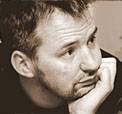"Imagine a warm summer day at the beach, a pile of sand, and a bucket of sea water. Pour some water on the top of the pile, and watch how it finds its way down. The first wave seems undecided, constructing a winding path to ground level. Later waves, however, follow this path, and flow downwards in a seemingly effortless fashion: a habit has been born."
How much of what you do each day is the result of habit? Learned sequences of acts that become automatic. Some habits don't appear to achieve anything at all. They are just the way we behave. Some habits are even passed on genetically with our minds acting in fright, flight, spite or delight because of some unknown series of events before you were even born.
The useful thing about habits is they are efficient. We don't have the brain power to think about everything we do, so we need shortcuts. Riding a bicycle, opening a door, saying hello - all done without bothering our minds with the details.
Without habits you're constantly struggling to find an appropriate response to every situation no matter how many times you've experienced it. Without traditions life becomes shaky - unbearably uncertain.
Driving becomes automatic. You may have had the experience of setting off to go to a new place and finding yourself driving to somewhere you are used to going to. Repeated behaviour conditions your brain to turn left and right without really thinking.
The problem is that bad driving also becomes automatic. Instead of mirror, indicator and accelerate, you might simply accelerate, nearly hit another car, curse at the other driver and continue along believing you were right all the time.
Some patterns of behaviours are labeled good and bad. The bad habit might get in the way of what you want. Or someone sticks a bad habit label on behaviour that gets in the way of what they want. Or that offends their sense of morality which is also habitual - an automatic pattern of judgments about other people's behaviour.
Groups have habits. Learned sequences of behaviour between members of the same group. Learned patterns between two groups. Anything from how they dress, to phrases and clichés, to whether they do just enough or whatever it takes to do a great job for a customer, for each other, or for your own satisfaction.
The habits of others influence our habits in a chain of subtle influences. Your friend's friend's friend affects everything, including body weight, car and age you're going to die. In part this is because we compare ourselves consciously, but it's far more because we take subconscious cues about the value, acceptability and availability of certain actions.
That's how fashion works. We wear clothes a certain way. Flares, baggies, hipsters and skinny jeans. All become habitual for a certain generation and may keep influencing their sense of what is 'normal' for the rest of their lives. Others become habitual only for a season or two or three since they belong to habits that are deliberately manipulated. With the habit becoming the pattern of changing your clothing to accomplish the goal of feeling great or fitting in.
How long to change a habit? Dr Maltz noticed in the 1960s that it took about three weeks for amputee patients to stop feeling a phantom limb. He also noticed that self-image problems could be solved in a 21 day program. He concluded that neuro-connections develop if action is repeated or 21 days without missing a day.
The truth is that different habits take different time and effort to change. But work by Anne Graybiel at MIT has demonstrated how neural patterns are shaped in the basal ganglia that influences habits and actions.
Her experiments involved rats finding chocolate in a maze. It was found that at first brain activity was high throughout the whole maze as the rats brain learned the way to the chocolate. After time, brain activity was only high at the beginning and end of the maze. It appears that everything in between doesn't really require active thought or learning.
Individual humans do their learning when facing new experiences for the first time. They learn their way around the maze to find the chocolate and then stop learning. They stop learning without realizing that they have stopped learning. It's why organizations can so rarely change themselves.
The bad thing is that you can do things that aren't helpful or healthy or happy without thinking about why. And without asking why you are stuck in routines. You may even defend the status-quo while complaining about it. Even if you ask why other people's habitual behaviour may force you back into the same rut.
To get groups learning new habits, the first step is new experiences. Their brains will engage because it is new. But the experience has to be new enough to engage, and engaging enough to prompt new thoughts. If it's a new idea delivered in an old way then prompts tell the brain to stop thinking. This, they say, is like any other meeting, memo, or mission. Been there, done that.
Second, do it more than once. Again and again. Until new habits develop to replace the old - because organizations just can't function without automatic behaviour.
Third, to help people, and organizations, to adopt new habits, we need to very precise about what the new habit looks like, how it sounds, how it feels, when it happens, and what will happen as a result. Because the brain needs to think its way from the comfortable, comforting, familiar old habit to a new behaviour that may be uncomfortable and discomforting. Or simply not yet habits.
Habits are linked to goals. We want the chocolate so follow a path through the maze. Explicitly engage people with thinking about connecting what they want with what they do and the result. If old habits don't deliver then a new behaviour can be built, designed from desire upwards.
Visualizing. Imagining. Drawing story boards. Acting out parts. Breaking it down into micro-responses, to things that are likely to happen. That's what allows the mind to willingly create new patterns that given time become the new way that things are done around here. A new habit is born.


Wonderfully written as always Max. The interesting thing about habits to me is that they are consciously formed, then go underground providing auto-pilot structure for what ever they were intended to so. Naturally changing them means going into the unseen domain... the subconscious hence the 21 days of neural reconfiguration. Culture change works the same way. The patterns that impact our own evolution are the same ones that organizations follow.... hence the two steps forward roll back sensation of organizational change.